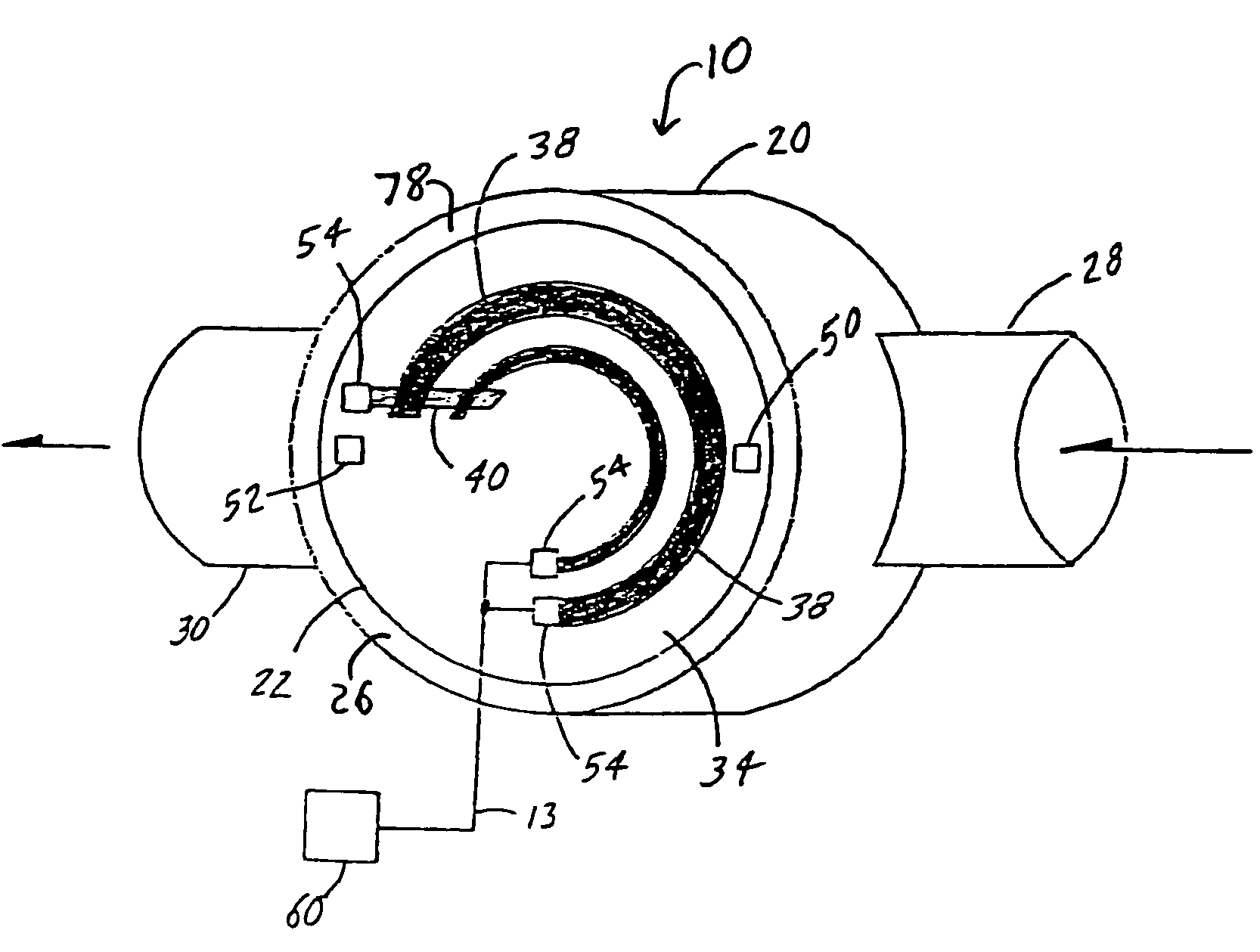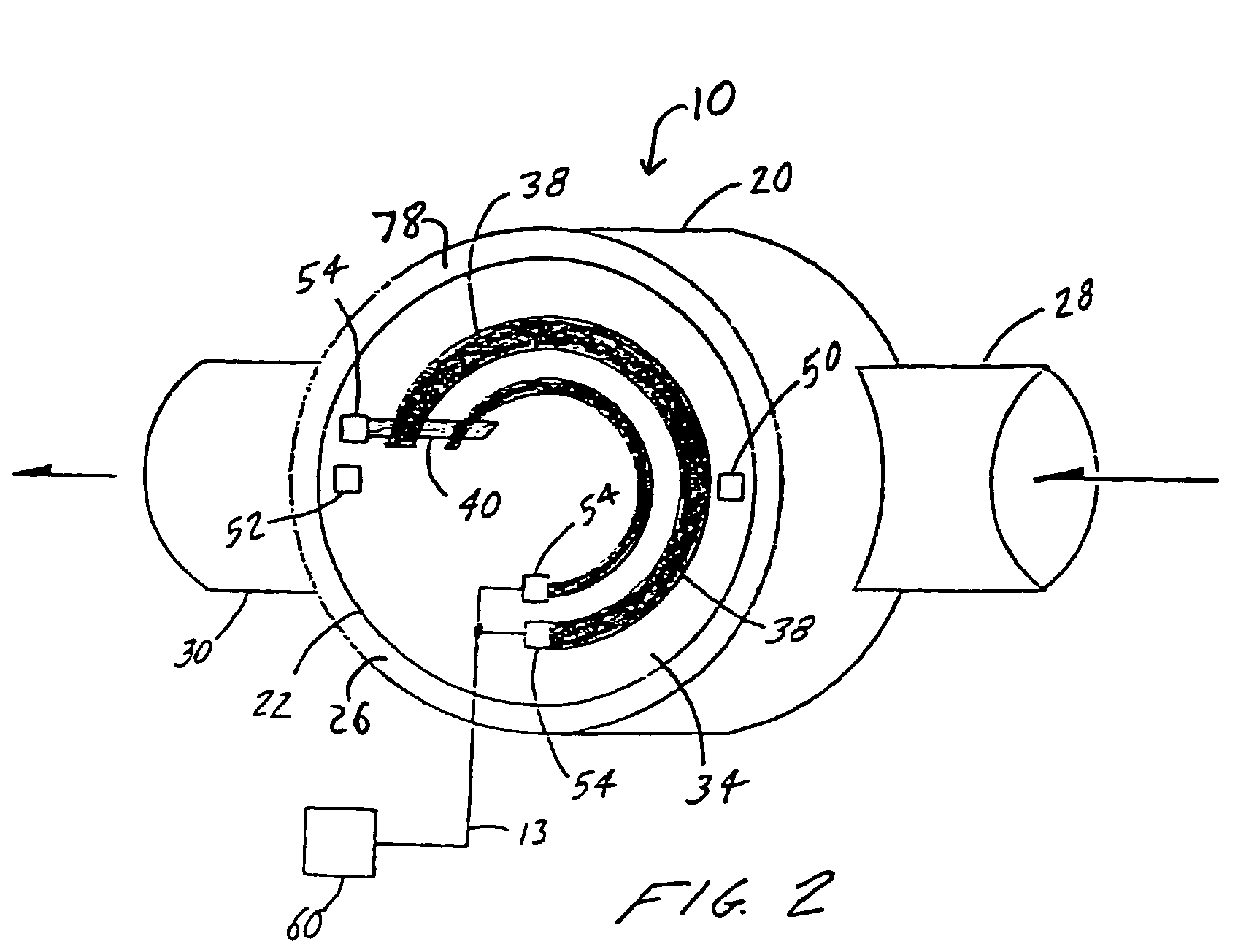Water heater
a technology for water heaters and water heaters, applied in the field of water heaters, can solve the problems of frequent failure and repair, heating element corrosion of various types, and requiring costly repairs, so as to eliminate the risk of leakage and busted fittings, and eliminate the risk of heating element corrosion
- Summary
- Abstract
- Description
- Claims
- Application Information
AI Technical Summary
Benefits of technology
Problems solved by technology
Method used
Image
Examples
Embodiment Construction
[0027]The following detailed description and accompanying drawings are provided for purposes of illustrating and describing presently preferred embodiments of the invention and are not intended to limit the scope of the invention in any way. It will be recognized that further embodiments of the invention may be used.
[0028]Referring now to the drawings wherein FIG. 1 is a diagram of a spa system showing the spa heater 10 with typical equipment and plumbing installed. The system includes a vessel for holding water 1 and a control system 2 with one or more microprocessors 58 to activate and manage various spa components and adjust and maintain various parameters of the spa. Connected to the vessel for holding water 1 through a series of plumbing lines 4 are one or more pumps 3 for pumping water, a skimmer 5 for cleaning the surface of the spa, a filter 6 for removing particulate impurities in the water, an air blower 7 for delivering therapeutic bubbles to the spa through one or more a...
PUM
 Login to View More
Login to View More Abstract
Description
Claims
Application Information
 Login to View More
Login to View More - R&D
- Intellectual Property
- Life Sciences
- Materials
- Tech Scout
- Unparalleled Data Quality
- Higher Quality Content
- 60% Fewer Hallucinations
Browse by: Latest US Patents, China's latest patents, Technical Efficacy Thesaurus, Application Domain, Technology Topic, Popular Technical Reports.
© 2025 PatSnap. All rights reserved.Legal|Privacy policy|Modern Slavery Act Transparency Statement|Sitemap|About US| Contact US: help@patsnap.com



